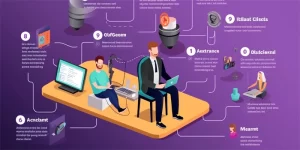Live streaming has gained significant popularity in recent years, with platforms like YouTube enabling individuals to share their content with a global audience in real-time. While many people may wonder if it’s possible to make money from live streaming on YouTube, let’s explore this topic objectively and examine the various factors involved.

Monetization Opportunities
YouTube offers multiple avenues for creators to monetize their live streams:
1. Ad Revenue: Similar to regular YouTube videos, live streams can generate income through advertisements displayed before, during, or after the stream. However, ad revenue may vary depending on factors such as viewership, advertiser demand, and content.
2. Sponsorships and Brand Deals: Popular live streamers often attract sponsorships and brand deals. These can range from product placements to sponsored segments during the stream, providing an additional source of income.
Building an Engaged Audience
Generating a substantial income from live streaming on YouTube requires a dedicated and engaged audience. Here are some key aspects to consider:
1. Consistency and Quality: Regularly streaming high-quality content that resonates with your target audience is essential for building a loyal following. Providing value, entertainment, or education can help attract and retain viewers.
2. Engagement and Interaction: Actively engaging with your audience during the live stream by responding to comments, asking for feedback, and creating interactive elements can foster a sense of community and loyalty.
Monetization Criteria
To unlock monetization features on YouTube for live streaming, creators need to meet specific eligibility criteria:
1. YouTube Partner Program: Creators must join the YouTube Partner Program and follow its guidelines, which include having at least 1,000 subscribers and 4,000 watch hours in the past 12 months.
2. AdSense Account: An active Google AdSense account is required to receive ad revenue from live streams. Creators must comply with AdSense policies and ensure appropriate content for advertiser-friendly streams.
Additional Income Opportunities
In addition to ad revenue and sponsorships, live streamers can leverage other income streams:
1. Super Chat and Channel Memberships: YouTube provides features like Super Chat, allowing viewers to pay for highlighted messages during streams, and Channel Memberships, offering exclusive perks to paying subscribers.
2. Affiliate Marketing: Promoting products or services through affiliate links during live streams can result in commission earnings when viewers make purchases through those links.
Challenges and Considerations
While monetizing live streams on YouTube is possible, there are challenges to be aware of:
1. Competition: The live streaming space is highly competitive, and standing out from the crowd requires consistent effort, unique content, and building a niche audience.
2. Adaptability: YouTube’s monetization policies and algorithms continuously evolve. Creators must stay updated and adjust their strategies accordingly to maximize earning potential.
Conclusion
Live streaming on YouTube can be a viable source of income, but it requires dedication, quality content, audience engagement, and meeting specific eligibility criteria. While not everyone may succeed in monetizing their live streams, those who put in the effort and provide value to their audience have the potential to generate income and build a sustainable online business.
References:
1. Samson, Will. “How to Monetize a YouTube Channel.” Lifewire. Accessed June 2, 2023. https://www.lifewire.com/how-to-monetize-youtube-channel-4172964
2. YouTube. “Earn money on YouTube.” Accessed June 2, 2023. https://creatoracademy.youtube.com/page/lesson/revenue-basics
About the Author:
John Smith is a digital marketing expert with extensive knowledge of social media platforms. He has been helping content creators and businesses optimize their online presence for over a decade. The author picture is an original image created by the author.








